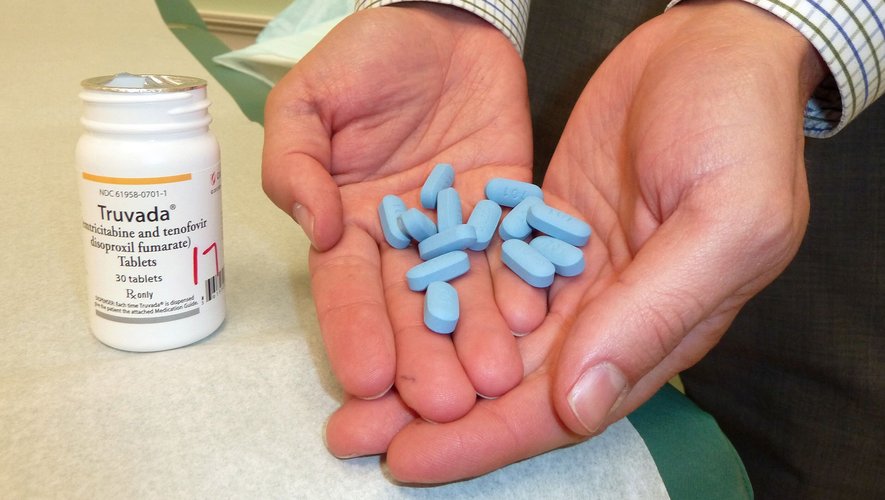(AFP) – Forty years after the discovery of HIV, a look back at the main stages of the AIDS epidemic, from its emergence to the current hope of eradication:
– 1981: first alert –
On June 5, 1981, the American health organization CDC reported a rare lung disease, pneumocystosis, in five young Californian homosexuals. This is the first AIDS alert.
So we don’t know anything about this disease, which has no name yet.
This same type of “opportunistic infection” is reported among injecting drug users (end of 1981), hemophiliacs having recourse to blood transfusions (mid-1982) and Haitians residing in the United States (mid-1982). We then speak of a “4H” disease (homosexuals, heroin addicts, hemophiliacs and Haitians).
The term “aids” (“acquired immune deficiency syndrome”) appeared in 1982. In French: “sida”, for acquired immunodeficiency syndrome.
– 1983: discovery of the virus –
In January and February 1983, at the Institut Pasteur in Paris, researchers Françoise Barré-Sinoussi and Jean-Claude Chermann, under the direction of Luc Montagnier, isolated a new virus, LAV, which “could be involved” in AIDS. . Their discovery is published May 20 in the journal Science.
On April 23, 1984, the United States announced that the American specialist Robert Gallo had found the “probable” cause of AIDS, a retrovirus called HTLV-3.
But LAV and HTLV-3 turn out to be the same virus which will be named in 1986 human immunodeficiency virus or HIV.
– 1987: first treatment –
On March 20, 1987, the first antiretroviral treatment, AZT, was authorized in the United States. It is expensive and its side effects are significant.
On March 31, an agreement was signed between France and the United States to end the dispute over the paternity of the discovery of HIV. Gallo and Montagnier are qualified as “co-discoverers”.
But in 2008, the Nobel Prize will only distinguish Luc Montagnier and Françoise Barré-Sinoussi for this discovery.
– Early 90: the stars are falling –
In the early 1990s, several stars fell, mowed down by AIDS: singer Freddie Mercury in November 1991, dancer Rudolf Nureyev in January 1993. In 1994, AIDS was the leading cause of death among Americans aged 25 to 44 .
– 1995-96: start of tritherapies –
In 1995-96, the arrival of two new classes of drugs marked a turning point: protease inhibitors and non-nucleoside reverse transcriptase inhibitors.
It is the beginning of the combinations of antiretrovirals: the tritherapies prove to be effective against HIV. In 1996 in the United States the number of victims declined for the first time.
Today, a person who starts anti-HIV treatment early has a life expectancy similar to that of the rest of the population.
– 2001: generic drugs –
After an agreement signed in 2000 by Onusida (UN AIDS program) and five major laboratories to distribute affordable treatments in poor countries, a compromise was signed on November 13, 2001 at the WTO to allow developing countries to manufacture generic anti-AIDS drugs when Africa is the first continent to be affected.
– 2010: the “Berlin patient” –
American Timothy Brown, known as the “Berlin Patient”, is cured of AIDS after receiving a bone marrow transplant (to treat leukemia) from a genetically HIV-resistant donor. Other similar cases will follow but without immediate therapeutic outlet.
– 2012: first preventive treatment –
On July 16, 2012, a first preventive treatment called PrEP (“pre-exposure prophylaxis”), the antiretroviral cocktail Truvada, was authorized in the United States. Since then, this type of treatment has proven its effectiveness and allowed people at risk to protect themselves by taking a preventive tablet.
– 2017: 50% of patients treated –
In 2017, for the first time, more than half of HIV carriers worldwide are on antiretroviral treatment. Today, this proportion is around three-quarters: 28.7 million people treated out of 38.4 million infected (UNAIDS 2021 estimates).
– 2020/21: the impact of Covid –
The Covid-19 pandemic is disrupting access to screening tests and treatments: 650,000 AIDS deaths and 1.5 million new infections are recorded in 2021, more than UNAIDS targets.
The Organization still hopes to “end AIDS as a public health threat by 2030”. 40.1 million people have died of AIDS since the start of the epidemic.

